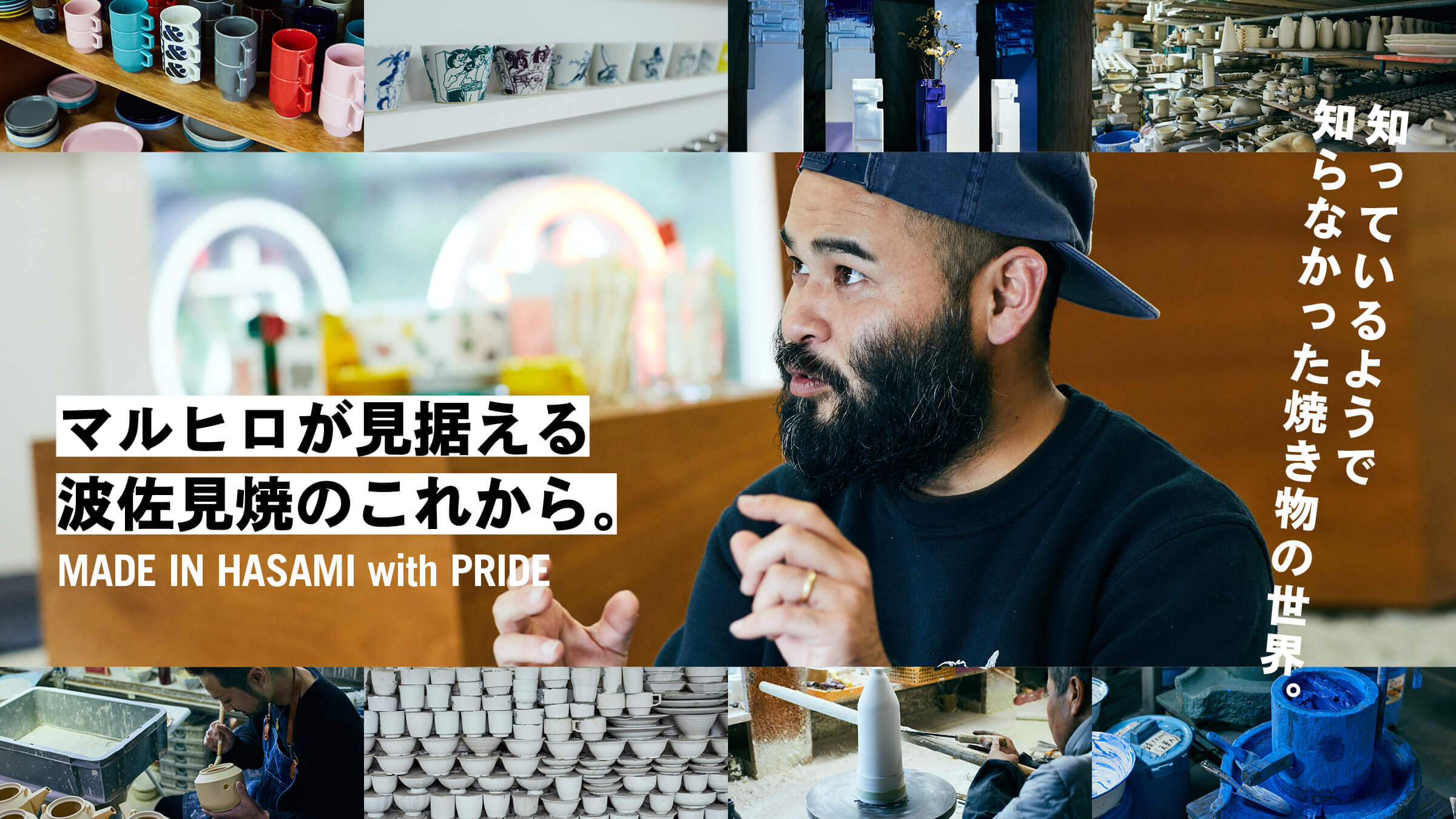The dough shop, where careful work plays a fundamental role in Hasami-yaki pottery making.


Dough is poured into a mold using a special machine. Making this dough is the key point of this process.
The "molds" made at the mold shop are then transported to the dough shop. This is where the dough is poured into the molds to create the raw materials for the pottery.

Ceramic stone crushed until powdery and combined with water to form clay.
Pottery clay is brought in from a potter's clay shop. Impurities are said to be removed by hand when it is in stone.
The most important thing for us is making the dough," said Shinsuke Muramatsu, a craftsman here. Most Hasami-ware is made of stone. Therefore, it is harder and smoother than ceramics made from clay.
Mr. Muramatsu continued, "The amount of water in the clay changes depending on the season, temperature, and humidity. The amount of water in the clay varies depending on the season, temperature, and humidity. There are two types of clay we use, "senjo" and "senchu". The higher the grade, the whiter and less impure it is. We mix it with water and sodium silicate to make it sticky, and we can get a well-balanced dough by mixing the right amount according to the weather and climate of the day," he says. If there is too much water, the dough will harden too slowly, and if there is too little, air will remain in the dough, causing it to crack or burst when baked. So if you don't do this dough-making process properly, everything will be ruined. It is a task that comes with great responsibility.

This work is shown in the group exhibition "AIR" in Nakameguro,
NIKE's "AIR FORCE 1" made of Hasami-ware. The mold was made by Mr. Iwanaga, whom we introduced earlier.

Because of its complex shape, the mold has a whopping 10 parts. They are carefully removed one by one.

Normally, they can let it sit for a few hours, but this one needs to be allowed to harden well because it is difficult to remove.
That time, what a day. When I was allowed to touch it, it felt somewhat like hard clay.
After a certain period of time, the plaster absorbs the water evenly and hardens into clay again. Since the plaster hardens from the surface that touches the mold, in the case of hollow objects such as vases and glasses, excess plaster should be poured out when the outer surface has hardened to a certain extent.
While simple shaped pottery such as bowls and plates can be smoothly removed from the mold, as shown in the photo, there are many parts to a single mold for complicated shapes, and these parts are carefully removed one by one. If they are too hard, they may break, and if they are too soft, they may deform, making the process "really tough," says Muramatsu.
On the other hand, for items with various parts, such as a teapot, the parts may be glued together later. Finally, smooth the surface with a brush dipped in water.

Finally, dry the dough in the workshop until it reaches a certain degree of hardness.
Various types of pottery, from tableware to cat-shaped hot water bottles, were on display.

Mr. Muramatsu is the same age as Baba-san. They seem relaxed because of their close age.
This is the end of the dough maker's process. The dried dough is sent to the kiln, and next we will introduce the process of glaze making.









